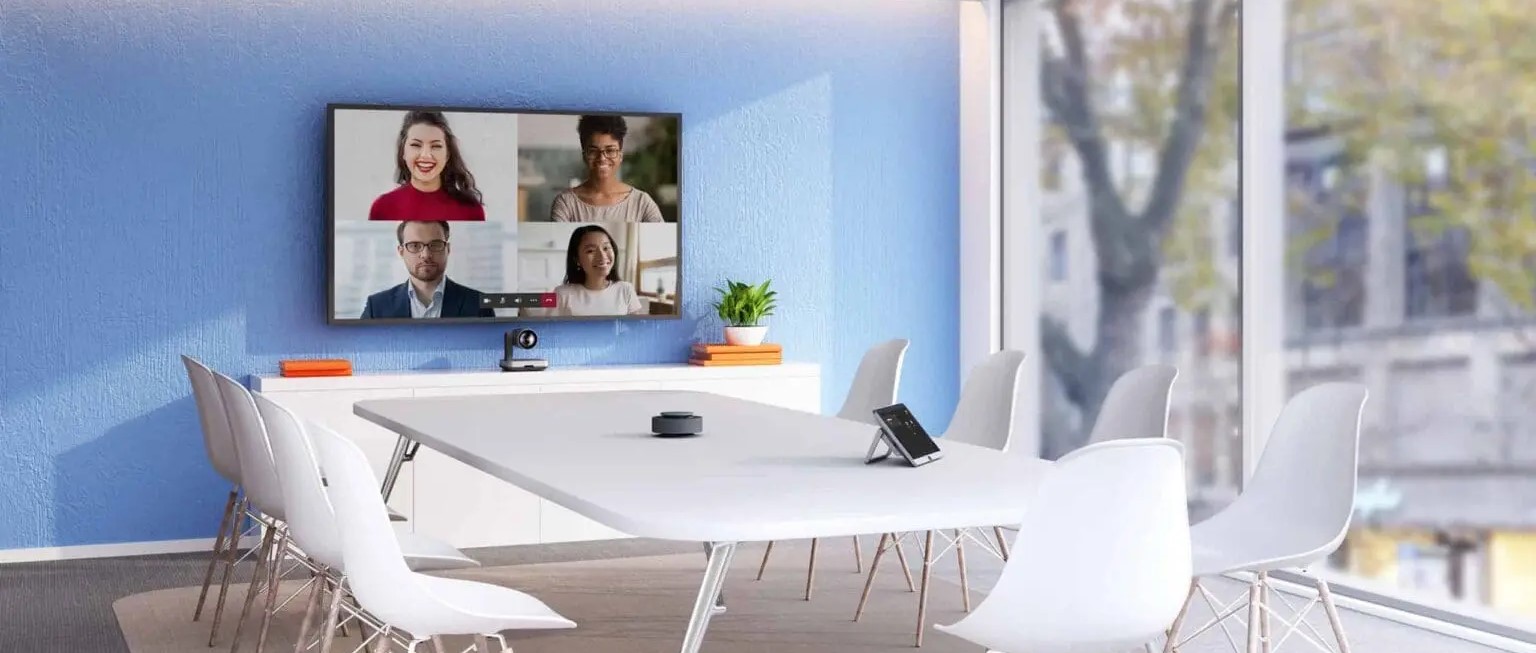The era of purely physical meetings is long gone! As organizations across the world get increasingly hybrid, they need to enable high levels of flexibility, so employees can collaborate from anywhere. But bridging the gap between in-person and remote attendees doesn’t come easy. Read on to learn how the hybrid workplace has changed the enterprise meeting dynamics and the role MS Teams Rooms play in ensuring every attendee is seen, heard, and fully engaged – whether they are connecting from the office, their homes, or on the go.
The hybrid workplace has changed the enterprise meeting dynamics
When the pandemic struck, organizations were quick to implement the hybrid workplace model as a temporary solution to keep the business afloat. But over time, they realized that the model was here to say. As employees began to demand more flexibility in how they work and where they work from, organizations were forced to adapt office spaces and technology to meet the needs of a hybrid workforce.
Team meetings were particularly affected, as many didn’t have the tools, technologies, and vision in place to align with the hybrid work requirements. With employees now working from different physical locations, face-to-face meetings are no longer always possible. While a handful of employees can still connect to meetings from a single office location, remote participants expect to join meeting rooms via conference and contribute just as seamlessly as their office counterparts.
But hybrid meetings are far more complex than meeting in person or even virtually. Being extremely susceptible to slip-ups, they are easy to do poorly and hard to do well. So, what makes hybrid meetings so complex?
- Offering onsite and remote employees the same meeting experience – regardless of the device they use
- Ensuring high-quality audio and video features, so everyone is equally heard and seen
- Allowing remote employees to see the faces of in-room attendees, shared presentations, physical documents handed out, whiteboard content, and more
- Maintaining high levels of security, given the fact that remote employees might attend meetings using personal devices and/or unsecured networks
- Ensuring remote employees can contribute just as much as their onsite peers, even though they aren’t physically present
- Designing a meeting space for all attendees – focusing more on how remote participants can maximize engagement and contribution
The role MS Teams Rooms play
When the hybrid workplace first came into existence, organizations had a tough time driving engagement. Making everyone feel as if they were a part of the same room didn’t come easy, and it impacted productivity and efficiency in several ways. But platforms like MS Teams Rooms have brought about a paradigm shift in how teams communicate and collaborate.
Microsoft Teams Rooms make everyone feel closer and more engaged, making it easy for them to collaborate. While in-room participants can retain their identity and stand out in the crowd, remote participants can make their presence felt – in almost the same way. By creating an environment where everyone feels included and represented, Microsoft Teams Rooms have elevated the hybrid meeting experience via modern layout, hardware, and technology configurations.
That said, let’s look at the significant role MS Teams Rooms play in making the hybrid meeting vision a reality:
- Remove barriers between spaces: Microsoft Teams Rooms are carefully built to eliminate barriers between spaces, places, and people, delivering the best Teams meeting experience to any space. By offering consistent high-quality audio and video capabilities to every attendee, they ensure everyone feels part of the same space and empower full participation from anywhere, at any time.
- Enable flexibility: Microsoft Teams Rooms can turn any meeting space into an easy-to-use and inclusive collaboration space, giving every attendee a seat at the table, regardless of where they work from. Inclusive video layouts help forge a deeper connection between in-person and virtual participants, allowing teams to maximize screen space and view people and content simultaneously. Seamless calendar integrations allow seamless reserving of rooms while enabling attendees to join meetings with a single touch.
- Fuel adoption: With Microsoft Teams Rooms, organizations can transform any meeting space, from small huddle areas to large conference rooms. Being easy to use, they enhance meeting productivity and provide a rich and collaborative Teams meeting experience. The familiar Teams UI paves the way for friction-free meeting experiences, allowing attendees to fuel engagement from the word go.
- Improve productivity: For employees working from different locations, Microsoft Teams Rooms offer capabilities that ensure productivity is never hampered. For instance, intelligent speakers can identify the speaker via voice recognition technology and insert the name into the meeting transcript. At the same time, attendees can use their personal devices to engage in meetings with features like chat and live reactions, enjoy collaborative whiteboarding, and intelligently capture people and content via their cameras.
- Deliver top-notch security: As teams get increasingly dispersed, Microsoft Teams Rooms ensure every room is securely managed. With security that is constantly updated, employees can be worry-free and easily and securely share content in a meeting from their personal devices – without cables or wires. The solution also allows admins to view and manage all devices in a single place and easily track inventory for configuration, update management, license information, and more.
As the hybrid workplace model becomes a global reality, organizations have a big task at hand – to offer a seamless and consistent hybrid meeting experience to every employee, no matter where they connect from. With employees now joining meetings from conference rooms, home offices, or on the go, there is a pressing need to enable connections that feel natural.
If you want your employees to feel included, represented, and engaged, you need to offer a hybrid meeting experience that is flexible, secure, and easy to adopt. Embrace MS Teams Rooms today to ensure every employee has equal footing – no matter where they are.



